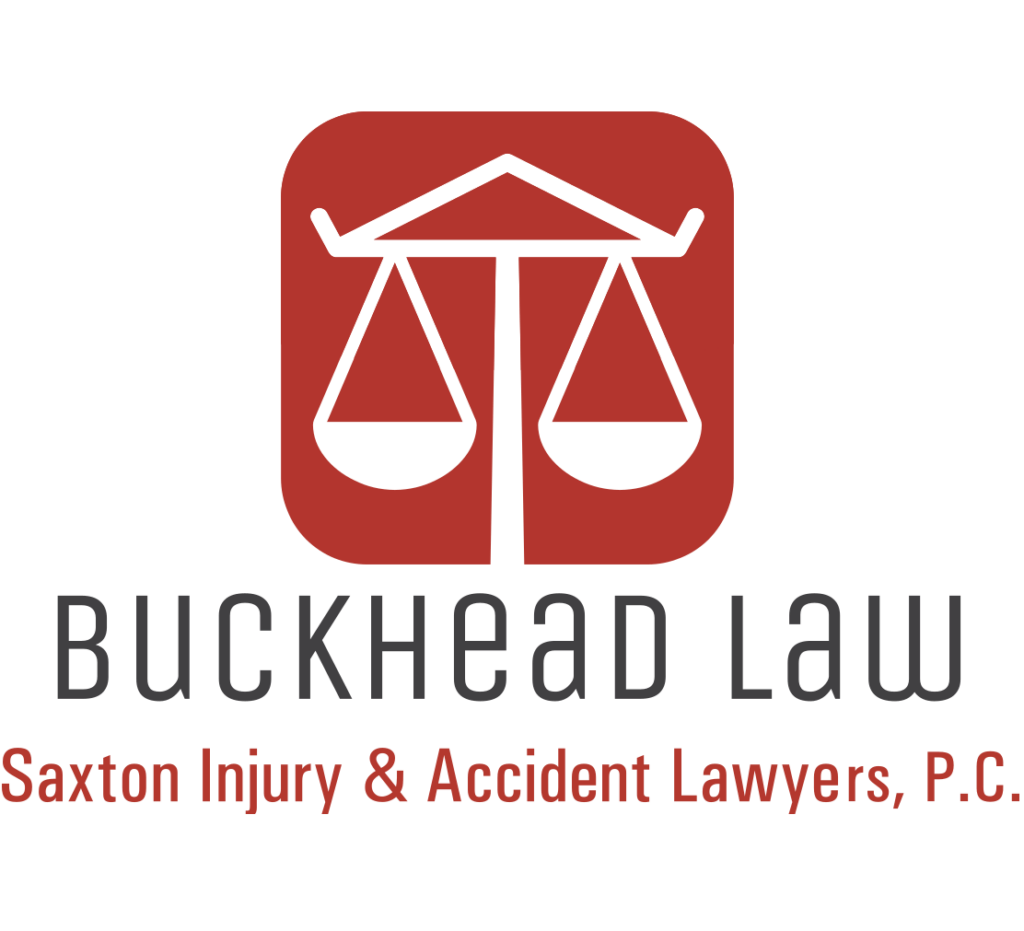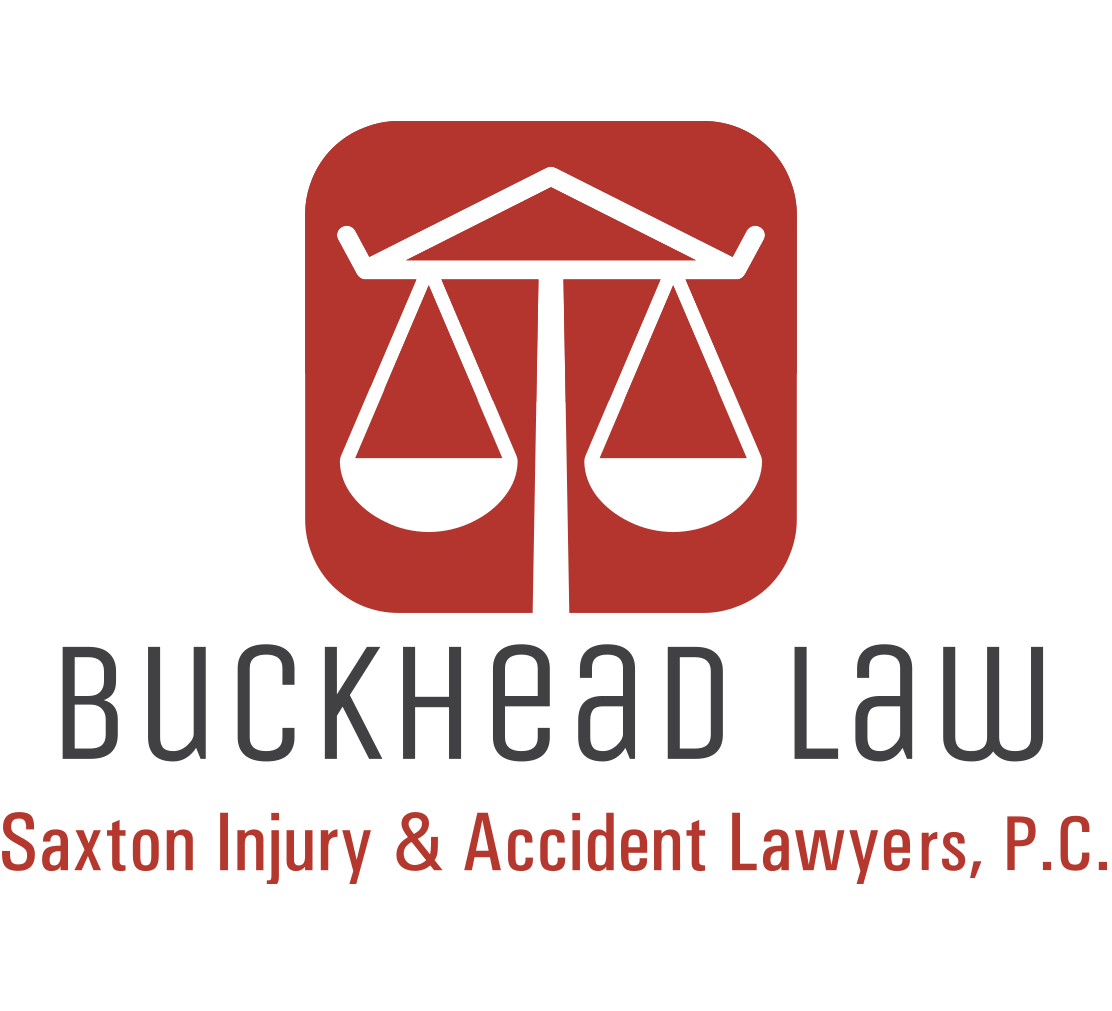The force of a motor vehicle accident can bring about serious neck and upper back injuries. In some instances, collisions may cause a soft tissue neck injury, while at other times, fractures – including vertebrae fractures – may occur.
If you recently sustained a neck injury in a motor vehicle accident that someone else caused, an experienced car accident attorney in Atlanta can pursue legal action on your behalf. Specifically, you can file a personal injury claim or lawsuit against the at-fault party or their insurance company in pursuit of the financial recovery you deserve.
What Kinds of Motor Vehicle Accidents May Cause Neck Injuries?

Motor vehicle accidents can result in various neck injuries, often arising from the abrupt and forceful movements that occur during a collision. One common scenario is the rear-end collision, whereby a vehicle strikes another vehicle from behind. The collision can cause the occupants’ heads to snap forward and then backward suddenly, leading to a whiplash injury — hyperextension and hyperflexion of the neck that causes strain on the soft tissues, ligaments, and muscles.
T-bone or side-impact collisions also pose a significant risk for neck injuries. In these accidents, force from the side can cause the neck to twist unnaturally. The sudden jolt and twisting motion can result in various injuries, including neck sprains, strains, or more severe conditions like herniated discs.
Head-on collisions, where two vehicles collide directly, can have severe consequences for the occupants’ necks. The collision forces the head and neck forward, backward, or violently to the side. This can lead to injuries such as cervical fractures, herniated discs, or damage to the spinal cord, all of which may result in significant neck pain and limited mobility.
Rollover accidents, although less common, can also cause neck injuries. The chaotic nature of a vehicle’s flipping over can subject the occupants to multiple impacts, increasing the risk of neck trauma. The twisting and turning motion during a rollover can cause a range of injuries, from mild strains to more severe cervical spine injuries.
Collisions at intersections, where vehicles may be moving in different directions, introduce a complex environment with the potential for various types of neck injuries. Depending on the point of impact, occupants may experience lateral, angular, or rotational forces, contributing to neck trauma.
In addition to the type of collision, factors such as the speed of the vehicles involved, the use of seat belts, and airbag deployment can influence the severity and nature of neck injuries. Even low-speed accidents can lead to neck injuries due to the rapid deceleration forces involved.
Various types of motor vehicle accidents, including rear-end collisions, T-bone collisions, head-on collisions, rollover accidents, and intersection collisions, can bring about neck injuries. The unique dynamics of each accident contribute to the risk of distinct types of neck trauma, emphasizing the importance of seeking medical attention and appropriate care after any motor vehicle collision.
Types of Neck Injuries That Can Result from a Motor Vehicle Accident

Motor vehicle crashes can lead to a spectrum of neck injuries due to the abrupt and forceful dynamics of collisions. Whiplash is a common injury, especially in rear-end collisions, where the impact causes the head to snap forward and then backward abruptly. This rapid motion strains the soft tissues, muscles, and ligaments of the neck, resulting in whiplash characterized by pain, stiffness, and limited range of motion.
Cervical fractures are another serious consequence of motor vehicle accidents, particularly in head-on collisions or high-impact crashes. The force involved can cause fractures in the cervical vertebrae, leading to severe pain, neurological symptoms, and the potential for long-term complications.
Herniated discs can occur when the force of a collision causes the discs between the vertebrae to rupture or protrude. This can result in compression of nearby nerves, leading to sharp pain, numbness, and tingling sensations. Rollover accidents, with their chaotic nature, can increase the risk of herniated discs due to multiple impacts and twisting motions.
Neck sprains and strains are also common in various types of motor vehicle accidents. The sudden jolts and forces applied to the neck can overstretch or tear the ligaments and muscles, causing pain, swelling, and reduced mobility.
In some cases, the accident affects the spinal cord, leading to cervical spinal cord injuries. These injuries can result in partial or complete paralysis, depending on the severity of the damage. Head-on collisions or rollover accidents are more likely to cause spinal cord injuries due to the intense forces involved.
In addition, facet joint injuries occur, involving damage to the small joints located between the vertebrae in the spine. The force of a motor vehicle crash can cause these joints to become dislocated or injured, contributing to neck pain and restricted movement.
Nerve damage is another potential consequence of neck injuries in motor vehicle accidents. The collision can compress or damage nerves in the cervical region, leading to radiating pain, numbness, and tingling sensations along the arms or shoulders.
Motor vehicle crashes can result in a range of neck injuries, including whiplash, cervical fractures, herniated discs, neck sprains and strains, spinal cord injuries, facet joint injuries, and nerve damage. The type and severity of the injury often depend on the dynamics of the collision, emphasizing the importance of prompt medical evaluation and appropriate treatment for individuals involved in such accidents.
How Do Motor Vehicle Collisions That Lead to Neck Injuries Frequently Occur?
Motor vehicle accidents causing neck injuries often arise from a combination of factors, with certain scenarios posing a higher risk for such trauma. Some of the most common causes of accidents that lead to neck injuries include:
- Distracted driving
- Speeding
- Driving under the influence of alcohol or drugs (DUI)
- Reckless driving behaviors, such as aggressive tailgating, weaving through traffic, or disregarding traffic signals
- Driver fatigue
Successfully Proving a Neck Injury in a Motor Vehicle Accident Case
Proving a neck injury resulting from a motor vehicle accident requires a multifaceted approach, combining medical evidence, documentation, and expert opinions. One crucial element is seeking immediate medical attention after the accident. Medical records from emergency room visits, follow-up appointments, and consultations with specialists provide comprehensive documentation of the initial assessment, diagnostic tests, and the ongoing treatment plan for the neck injury.
Diagnostic imaging, such as X-rays, CT scans, or MRIs, plays a pivotal role in establishing the extent and nature of the neck injury. These imaging studies provide visual evidence of fractures, soft tissue damage, or other abnormalities in the cervical spine, supporting the claim for a specific neck injury sustained in a motor vehicle accident.
Medical reports and narratives from treating physicians are essential in documenting the cause-and-effect relationship between the accident and the neck injury. Physicians can detail the specific diagnosis, treatment protocols, and prognosis, linking the symptoms and findings directly to the collision. Their expert opinions carry significant weight in substantiating the legitimacy of the neck injury claim.
Engaging the services of expert witnesses, such as orthopedic surgeons or neurologists, can further strengthen the case. These specialists can provide independent assessments, interpretations of medical records, and expert opinions on the causation and severity of the neck injury. Their testimony can be instrumental in establishing a clear connection between the accident and the resulting trauma.
Physical therapy records and rehabilitation plans are valuable in demonstrating the ongoing effect of the neck injury on an individual’s daily life. These documents provide insights into the functional limitations, pain levels, and progress in recovering from the neck injury. They serve as tangible evidence of the ongoing consequences and the efforts taken to address and mitigate the effects of the trauma.
Photographic evidence of visible injuries, such as bruising, swelling, or scars, can further support the claim. Images taken immediately after the accident and throughout the recovery process provide a visual timeline of the physical manifestations of the neck injury.
Statements from eyewitnesses who observed the immediate aftermath of the accident and noticed signs of distress or injury to the neck can serve as additional corroboration. Their testimonies contribute to establishing the connection between the collision and the subsequent neck injury.
Proving a neck injury in a motor vehicle accident involves a combination of medical records, diagnostic imaging, treating physicians’ reports, expert opinions, physical therapy records, photographic evidence, and eyewitness statements. By assembling a comprehensive array of documentation and expert support, individuals can build a compelling case that substantiates the effect of the motor vehicle accident on their neck health.
How Do You Know When to Litigate a Motor Vehicle Accident Case That Produces a Neck Injury?

Determining when to litigate a motor vehicle accident case involving a neck injury hinges on several factors, primarily centered around the severity of the injury, the complexity of liability issues, and the effectiveness of settlement negotiations. If the neck injury is severe, causing long-term consequences or permanent impairment, it may be a pivotal factor in favor of pursuing litigation. Such cases often require extensive medical treatment and ongoing rehabilitation and may lead to significant financial losses, making litigation a viable avenue to secure adequate compensation.
When the opposing party disputes liability or liability for the accident is unclear, litigating the motor vehicle accident case becomes a prudent choice. If there are challenges in determining who is at fault or if the opposing party contests their responsibility for the accident, legal action may be necessary to resolve the dispute. Establishing liability is crucial in obtaining compensation for a neck injury, and litigation provides a structured process for presenting evidence, witness testimonies, and expert opinions to support the claim.
The effectiveness of settlement negotiations is another key consideration. If negotiations with the at-fault party’s insurance company are stalling, yielding inadequate offers, or if the opposing party’s insurance provider is reluctant to acknowledge the full extent of the neck injury, pursuing litigation may become a necessary step. Litigation introduces a legal framework that compels the opposing party to engage in a more formal and structured resolution process, potentially leading to a more equitable outcome.
Another significant factor is the willingness of both parties to negotiate and reach a fair settlement outside of court. If there is a genuine effort to resolve the case amicably, it may be in the best interest of all parties involved to avoid the time, cost, and emotional toll of litigation. The parties can explore mediation or alternative dispute resolution to facilitate a mutually agreeable resolution.
Timeliness is also crucial when deciding whether to litigate a motor vehicle accident case. If the statute of limitations is approaching, it may be necessary to file a lawsuit to preserve the right to seek compensation. Delays in initiating legal action can jeopardize the ability to recover damages for the neck injury.
The decision to litigate a motor vehicle accident case involving a neck injury depends on the severity of the injury, liability issues, the effectiveness of settlement negotiations, the willingness of both parties to engage in alternative dispute resolution, and the timeliness of legal action. Weighing these factors carefully with the guidance of legal counsel can help individuals make informed decisions about the most appropriate course of action for their specific case.
Types of Recoverable Financial Compensation in a Neck Injury Case Resulting from a Motor Vehicle Collision
Financial compensation for a neck injury in a motor vehicle accident case encompasses various elements designed to address the physical, emotional, and economic consequences of the trauma. Common types of compensation include:
- Medical expenses associated with initial emergency medical care, diagnostic tests, surgical procedures, prescription medications, rehabilitation, and ongoing treatments
- Compensation for lost income or loss of earning capacity
- Pain, suffering, and inconvenience, to address the intangible consequences of a neck injury
- Diminished quality of life, to address the lasting changes in an individual’s lifestyle due to the neck injury, such as alterations in recreational activities, hobbies, or personal relationships
- Property damage reimbursement
In cases of severe or catastrophic neck injuries leading to disability, compensation for future medical expenses and ongoing care may be available. This includes costs associated with long-term medical treatment, rehabilitation, assistive devices, and necessary modifications to accommodate the individual’s changed circumstances.
In certain situations, punitive damages may also be available. The purpose of these damages is to punish the at-fault party for particularly egregious conduct that led to the motor vehicle accident and subsequent neck injury. However, punitive damages are not guaranteed and typically apply to cases involving intentional or reckless behavior.
Financial compensation for a neck injury in a motor vehicle accident case encompasses medical expenses, lost income, pain and suffering, diminished quality of life, property damage reimbursement, compensation for future medical expenses and care, and potentially punitive damages. Each element aims to provide a comprehensive recovery that addresses the multifaceted effects of the neck injury on the individual’s life.
How a Lawyer Can Help
In a motor vehicle or pedestrian accident case that involves a neck injury, an experienced attorney can help you throughout every stage of the process. Some of the most important ways that an experienced lawyer can help include:
- Investigating your accident circumstances and obtaining a copy of the police report and similar documentation
- Speaking with eyewitnesses to learn about their observations
- Gathering medical documentation, bills, and lost income documentation
- Determining available insurance coverage in your case and filing a claim with the appropriate insurance company
- Negotiating with the insurance company adjuster for favorable settlement compensation
- Reviewing litigation options if the insurance company refuses to compensate you fairly for your injuries or denies liability
- Taking your case to a trial or alternative dispute resolution (ADR) proceeding and pursuing full damages for your injuries
An experienced motor vehicle accident attorney will be in your corner at all times, aggressively advocating for your interests and working to maximize your compensation.
Call an Experienced Motor Vehicle Accident Attorney Right Away About Your Legal Matter

If you suffered a neck injury in a motor vehicle or pedestrian accident due to someone else’s negligence, an experienced personal injury lawyer can help. Your lawyer can promptly evaluate your legal options to pursue the financial recovery you need for your accident-related losses.
